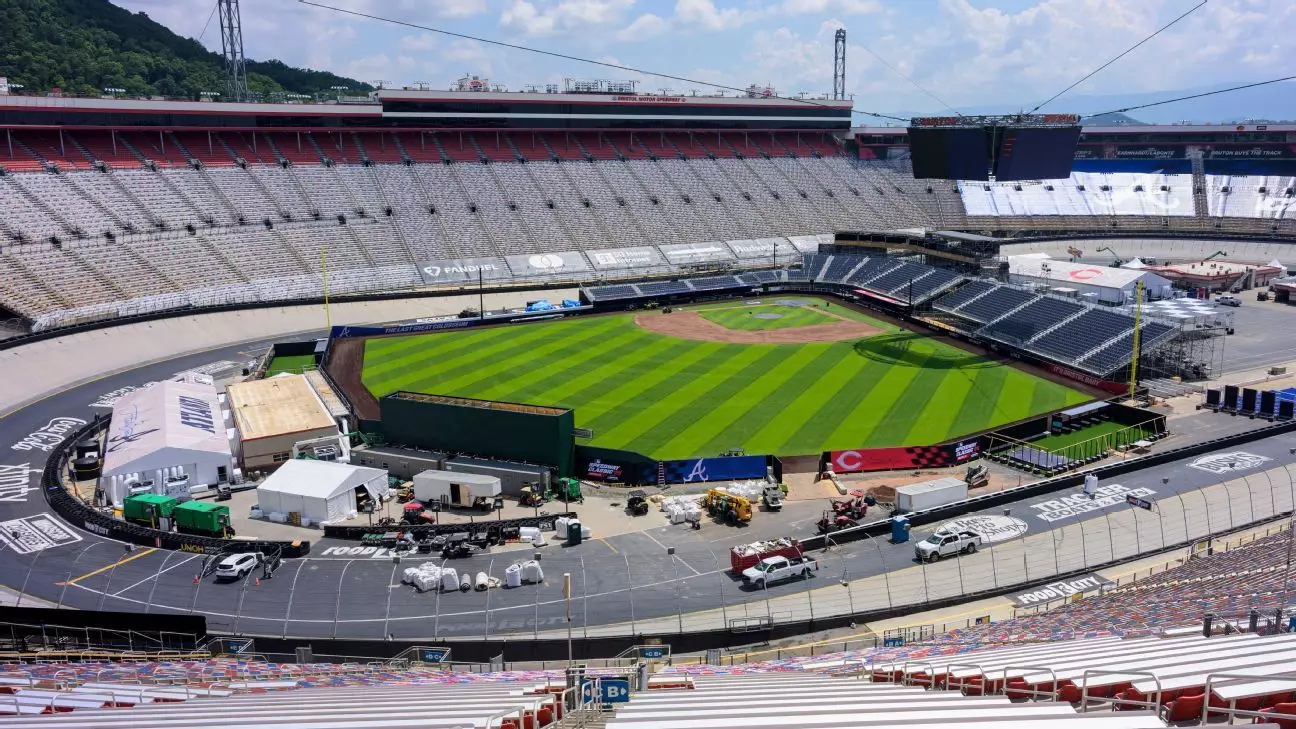Bristol Motor Speedway, renowned for its roaring engines and roaring crowds, has demonstrated a remarkable capacity to reinvent itself. When the Atlanta Braves and Cincinnati Reds stepped onto the infield for an unconventional MLB game, it marked more than just a sporting event; it signified a transformative experiment in adaptive reuse and logistical mastery. The transition from a high-octane racetrack to a baseball diamond was no small feat. It required meticulous planning, logistical dexterity, and a relentless dedication to multifaceted operational excellence. This event underscored Bristol’s potential as a versatile venue capable of hosting diverse events, breaking traditional boundaries that confine most sports arenas.
This adaptability speaks volumes about the evolving role of large-scale sports venues in the modern era. It isn’t merely about hosting one type of event but creating a flexible infrastructure capable of supporting multiple sports and entertainment formats. This versatility not only boosts the economic resilience of the facility but also enhances its community value—serving as a hub for different passions, audiences, and needs.
Engineering Marvels and Logistical Challenges Reimagined
Transforming a racetrack into a baseball field involves far more than laying down a few wooden planks or slipping in a new turf. It’s an intricate, step-by-step process that demands precision engineering, substantial material resources, and strategic timing. The use of 17,500 tons of gravel and 340 tons of Pennsylvania clay exemplifies the scale of engineering needed. This effort isn’t just about aesthetics but about creating a surface that withstands competitive play for baseball, which is markedly different from racing.
Every element, from constructing new grandstands to rebuilding pit walls, requires logistical finesse. The level of coordination involved—timing the disassembly of baseball infrastructure to coincide with NASCAR preparations—is a logistical ballet. These complex projects often run the risk of delays and unforeseen issues, yet the Bristol team’s target finish date of September 7 speaks to their confidence and mastery in project management. In this context, the venue’s natural resilience and adaptability shine through, exemplifying how strategic planning can overcome physical and temporal constraints.
Beyond the Event: A Revitalization of Community and Purpose
What sets Bristol apart from other arenas is its genuine commitment to social impact and community sustenance. The materials used during the conversion, such as gravel, plywood, and 2x4s, aren’t discarded after use. Instead, they serve a secondary purpose—helping communities still grappling with Hurricane Helene’s aftermath. This thoughtful reuse highlights a broader philosophy of sustainability and social responsibility. It transforms the event from being merely a spectacle to a catalyst for positive change.
Additionally, the event’s success challenges preconceived notions about venue functionality. When a venue can shift from college football to Major League Baseball—and potentially to hockey—the narrative shifts from rigidity to resilience. Such flexibility not only enhances Bristol’s commercial appeal but also establishes it as a pioneer in venue versatility. This bold approach positions the city as a hub for multi-sport and entertainment experimentation, fostering innovation in event hosting and facility management.
Implications and Future Aspirations
The implications of Bristol’s recent endeavors extend well beyond the immediate logistical triumphs. The hosting of diverse sports events contributes to a broader cultural dialogue about the future of sports infrastructure. It suggests that sports venues can serve multiple purposes without sacrificing quality or experience, thus promoting sustainability and economic expansion.
The reported interest from the NHL reflects a growing recognition of Bristol’s infrastructural capabilities. If successful, these cross-sport collaborations could redefine how sports leagues and organizers perceive venue flexibility. It’s a testament to how innovation and courage can elevate a traditional racing venue into a multi-sport, multi-purpose powerhouse. Bristol’s bold experiment demonstrates that sports venues are no longer static entities—they are dynamic platforms for community engagement, innovation, and ecological consciousness.
By boldly embracing change and prioritizing adaptability, Bristol Motor Speedway not only reinvents its identity but also sets a precedent for future development worldwide. The real challenge lies ahead: maintaining this momentum, ensuring operational excellence, and continually pushing the boundaries of what a venue can achieve in an interconnected, multifaceted sporting landscape.

